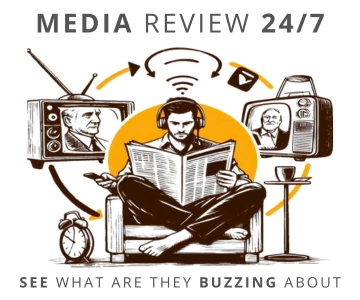 Bing AI illustration
Bing AI illustrationA Sudden Shift: Google’s Decision to Retain Cookies
The surprise came in July 2024 when Anthony Chavez, Vice President of Privacy Sandbox, announced that Google would allow users to decide for themselves about blocking cookies. According to the "State of Digital Identity Report 2024", published by analysts from ID5, 63% of respondents believe the decision resulted from poor Privacy Sandbox testing, while 60% cite ongoing investigations by the UK’s CMA.
- Google removed cookies for 34.5 million users, which is 1% of Chrome’s global user base.
- 76% of respondents have already implemented cookie-free solutions.
- 75% of respondents believe Google’s decision will not affect their shift to cookie-free alternatives.
| Factor | Percentage of Respondents |
|---|---|
| Poor Privacy Sandbox Test Results | 63% |
| CMA Investigation | 60% |
Alternatives to Cookies: What Solutions is the Industry Choosing?
The report emphasizes that the removal of cookies could significantly impact publishers’ revenue. Criteo’s study forecasts that revenue could fall by 60% if Privacy Sandbox became the sole alternative. This is due in part to Privacy Sandbox causing ad delays of over 100%, negatively affecting user engagement.
According to the ID5 report, 85% of respondents already use universal identifiers to handle cookie-free traffic. These solutions, along with Deal IDs and first-party IDs, enable personalized and legally compliant ad campaigns, which is crucial in today’s evolving technology landscape.
Most Popular Alternatives:
- Universal Identifiers: 85%
- PMPs/Deal IDs with First-Party Data: 56%
- Data Clean Rooms: 51%
Challenges in Other Channels: CTV, Mobile, Audio, and Gaming
Although much of the discussion has focused on cookies in browsers, the ID5 report shows that the user identification challenge goes beyond this space. The biggest challenge remains in Connected TV (CTV), where 79% of respondents believe users lack sufficient control over their data.
| Channel | Percentage of Respondents Citing Need for Better Addressability |
|---|---|
| Connected TV (CTV) | 54% |
| Mobile/In-App | 26% |
| Digital Audio | 9% |
Main Obstacles in CTV and Mobile Channels:
- Measurement Challenges: Difficulty in accurately measuring campaigns.
- Cross-Channel Reconciliation: Challenge in synchronizing data across channels.
- User Consent: Difficulty in obtaining and communicating consent for tracking.
The Cookie-Free Future: Industry Expectations and Concerns
The advertising industry is at a crossroads, seeking solutions that are not only effective but also comply with privacy regulations. Amid uncertainty about when the new system in Chrome will take effect, 80% of respondents expect the option to opt-out of cookies to be introduced in the first half of 2025.
You can download the full report "The State of Digital Identity Report 2024" here:
https://id5.io/resources/state-of-digital-identity-2024/
COMMERCIAL BREAK
New articles in section Marketing and PR
Dance in the media mirror. Between culture, business and viral fame
KFi
Over 78,000 media pieces, 1.6 billion potential views, and 197,500 social media mentions-dance in Poland is no longer niche. With a combined media value exceeding PLN 800 million, it now outperforms MMA, handball, and hockey.
PR in Poland. Ranking of the largest public relations agencies 2025
KFi
The smallest teams often generate the most publications, and agencies outside Warsaw are increasingly capturing media attention. This unexpected distribution of power is one of the key findings from the 2025 PR Agency Ranking in Poland, developed by Widoczni and IMM.
Connected TV and borderless advertising. The ID5 report
KFi
Viewers are moving away from cable TV. And they are doing it en masse. Already 86% of Europeans watch content via Connected TV and global ad spend in this segment is set to double by 2028. The industry is undergoing a communication revolution.
See articles on a similar topic:
Foreign online stores face distrust in Poland. See TrustMate Report
KFi
Poland’s e-commerce market is booming, yet foreign online stores still struggle to earn consumer trust. Why do Polish shoppers prefer local sellers? A new report uncovers the roots of this distrust and reveals what international brands must do to bridge the gap.
The future of search is now. How AI is reshaping brand visibility
KFi
AI Search and Share of Voice are no longer optional marketing metrics. They’re essential. Yet only 7% of Polish companies use AI. In the new search landscape, that’s nowhere near enough. Fall behind now, and your brand could simply... vanish from the internet.
Artificial Intelligence, Real Results in Marketing. HubSpot Report
BARD
Although AI is a term that can sometimes evoke concerns, the "AI Trends Report 2024" compiled by analysts at HubSpot shows that for many, artificial intelligence is the future of marketing.
Dietary Supplements. How Products Masquerading as Medications are Sold
Ewa Zygadło-Kozaczuk
Colorful packaging entices us with miraculous health benefits, and we buy them, hoping for a fit body, good sleep, great mood, and excellent sex. But do we know what lies behind that magical pill, capsule, or syrup? Are we aware that these advertised products are merely masquerading as medications?





























